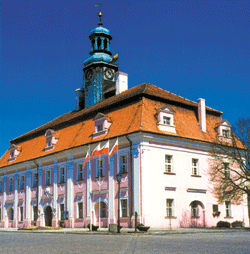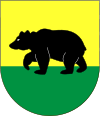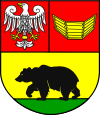Rawicz
| Rawicz | ||
|---|---|---|
|
Town Hall in Rawicz | ||
| ||
 Rawicz | ||
| Coordinates: 51°36′33″N 16°51′27″E / 51.60917°N 16.85750°E | ||
| Country |
| |
| Voivodeship | Greater Poland | |
| County | Rawicz County | |
| Gmina | Gmina Rawicz | |
| Established | 1638 | |
| Town rights | 1638 | |
| Government | ||
| • Mayor | Tadeusz Pawłowski | |
| Area | ||
| • Total | 7.81 km2 (3.02 sq mi) | |
| Population (2006) | ||
| • Total | 21,301 | |
| • Density | 2,700/km2 (7,100/sq mi) | |
| Time zone | CET (UTC+1) | |
| • Summer (DST) | CEST (UTC+2) | |
| Postal code | 63-900 | |
| Area code(s) | +48 65 | |
| Car plates | PRA | |
| Website | http://www.rawicz.pl | |
Rawicz [ˈravʲit͡ʂ] (German: Rawitsch) is a town in central Poland with 21,398 inhabitants (2004). It is situated in the Greater Poland Voivodeship (since 1999); previously it was in Leszno Voivodeship (1975–1998). It is the capital of Rawicz County.
History
The town was founded by Adam Olbracht Przyjma-Przyjemski for Protestant refugees from Silesia during the Thirty Years War. In the 1800s, it contained a Protestant church and a medieval town hall. The principal industry was the manufacture of snuff and cigars. Trade involved grain, wool, cattle, hides, and timber. In 1905 it had 11,403 inhabitants. A large prison exists in former monastery since 1820. After World War I the town became part of the Second Polish Republic.
A 50 billion cubic feet natural gas discovery at Rawicz in 2015 is expected to be the largest gas development in Poland for 20 years.[1]
Notable residents
- Heinrich Braun (1862 – 1934), surgeon
- Maximilian Otte (1910 – 1944), Luftwaffe pilot
- Arthur Ruppin (1876–1943), Zionist
- Reinhard Seiler (1909-1989), Luftwaffe officer
- Anita Włodarczyk, Polish hammer thrower
See also
References
External links
| Wikimedia Commons has media related to Rawicz. |
Coordinates: 51°37′N 16°53′E / 51.617°N 16.883°E


